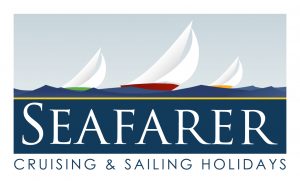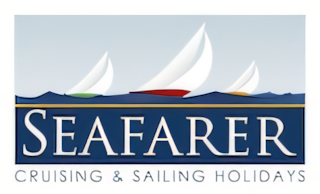-
 Croatia Training CentreCroatiaanemptytextllineOur RYA Yacht Training Centre, based in Split, offers the full range of RYA practical courses in the Sail Cruising scheme.
Croatia Training CentreCroatiaanemptytextllineOur RYA Yacht Training Centre, based in Split, offers the full range of RYA practical courses in the Sail Cruising scheme. -
 Greece Training CentreGreeceanemptytextllineLearn to sail & qualify as a skipper with one of our 3 Nikiana based training yachts as they cruise through the Ionian islands.
Greece Training CentreGreeceanemptytextllineLearn to sail & qualify as a skipper with one of our 3 Nikiana based training yachts as they cruise through the Ionian islands. -
 anemptytextllineFull range of RYA courses, including Competent Crew and Day Skipper, plus advanced training from Coastal Skipper to Yachtmaster Offshore.
anemptytextllineFull range of RYA courses, including Competent Crew and Day Skipper, plus advanced training from Coastal Skipper to Yachtmaster Offshore.
What Is The ICC
The ICC is a certificate which is intended to provide evidence of competence when requested by officials in foreign countries.
The ICC or International Certificate for Operators of Pleasure Craft, sometimes known as the International Certificate of Competence.
It is issued under the United Nations Economic Commission for Europe (UNECE) Inland Transport Committee Working Party on Inland Water Transport Resolution 40.
The UK Government has accepted Resolution 40 and has authorised the RYA to issue the ICC on its behalf.
For more information see the RYA advice on Competence Abroad – UK ICC issued by the RYA
Do you need an ICC
It is undoubtedly a requirement to comply with the law of any county you visit, and every county has differences, so it is essential to check the Requirements first. The RYA Website lists those countries that generally accept the ICC – RYA – Where might the ICC be accepted?
However, generally speaking, the ICC is accepted in Croatia, Greece, Italy, Portugal, Spain and Turkey.
If you already have an RYA Day Skipper Certificate, then this is currently accepted in these countries also.
How to get an ICC
If you already have your RYA Day Skipper certificate, then the RYA will issue you an ICC, free to its members.
If you do not have an RYA Day Skipper certificate, then we can give an ICC assessment, see below for where to get assessed.
It’s important to note the assessment is an evaluation of your ability. It takes a maximum of 4 hours, and you will need to demonstrate the skills laid out in the assessment criteria section below. If you are not comfortable with this, we can give you a few days of preparation before your assessment. If you think you need more than this, then we recommend you take the RYA Day Skipper course. For more advice, please feel free to contact us.
Renewing Your ICC
The ICC certificate will last 5 years. After this time, you will need to renew it. Unless you wish to have additional categories added to your ICC, the renewal process is simply a paper exercise.
In contrast, the RYA Day Skipper certificate lasts forever. It can be used as evidence of competence in many places & at any time can be used to obtain an ICC. We would recommend the Day Skipper course to most people as the best way to get qualified.
Where to get assessed for an ICC
At our Southampton UK school, we can offer an ICC assessment and preparation over a weekend.
If you spend a week at Nikiana Beach club before your flotilla or yacht charter, we can prep and assess you for an ICC on our school tuition yacht.
Our two Mediterranean Training Centres in Greece and Croatia are better suited to 1-week courses. We recommend the RYA Day Skipper course at these locations. We can assist in the completion of ICC forms, and you can achieve both your Day Skipper and ICC simultaneously.
To help choose where to do this course see our Training Centres overview page.
The ICC Assessment Criteria
The assessment form can be downloaded from the RYA website – The ICC Assessment
ORAL / WRITTEN ELEMENTS ALL CANDIDATES
Regulations
- Knows responsibility for keeping a proper lookout
- Can determine a ‘safe speed’
- Can recognise a potential collision situation
- Can identify ‘give way’ vessel in a collision situation
- Knows what action to take as ‘give way’ and ‘stand on’ vessel
- Knows responsibilities of a small vessel in a narrow channel
- Can recognise manoeuvring signals (1.2.3 & 5 short blasts)
- Can make and recognise visual distress signals
Safety
- Is able to use and instruct crew on the use of:
- Life jackets
- Distress alerting (e.g. DSC VHF, EPIRB, Flares, etc.)
- Fire extinguishers
- Kill cord (if fitted)
- Can prepare a boat for use and take sensible
precautions before setting out, including:- Engine checks
- Check fuel for range / duration of trip
- Obtain weather forecast
- Avoid overloading boat
Regulations
- Knows rules relating to Traffic Separation Schemes
- Knows requirements for navigation lights and shapes to be
displayed by own vessel - Can recognise the following from the lights: Power driven, sailing
vessel, vessel at anchor, tug and tow, fishing vessel, dredger - Knows sound signal to be made by vessels as in Q3
Navigation
- Can interpret a navigational chart, understand significance of
charted depths and drying heights and can identify charted hazards - Can plot position by cross bearings and by latitude / longitude
- Can determine magnetic course to steer, making allowances for
leeway and tidal stream - Can use a tide table to find times and heights of high and low
water at a standard port - Can determine direction and rate of tidal stream from a tidal
stream atlas or tidal diamonds on a chart - Understands basic use of GPS
Pilotage
- Can recognise, by day and night, and understand significance of
buoys of the IALA system - Knows sources of information on: local regulations, port entry and
departure signals, VTS and Port Operations Radio - Can plan a harbour entry/departure, taking account of possible
presence of large vessels and avoiding navigational hazards
PRACTICAL ELEMENTS
Start
- Give safety briefing including use of safety equipment
- Has listened to weather forecasts
- Pre start engine checks
- Use kill cord (if fitted)
- Start engine
- Check cooling
- Knows fuel range
Depart from Pontoon
- Understands use of springs to depart from lee wall/pontoon
- Communicate with crew
- Position fenders correctly
360° Turn in Confined Space
Securing to Buoy
- Communicate effectively with crew
- Prepare warp
- Choose correct angle of approach
- Control speed of approach
- Secure boat effectively
- Depart from the mooring safely
Man Overboard
- Observe MOB or instruct crew to do so
- Demonstrate correct direction and speed of approach
- Make suitable contact with MOB
6a. Planning Speed Manoeuvres (if appropriate)
- Choose suitable area
- Show awareness of other water users
- Warn crew before each manoeuvre
- Look around before S and U turns
- Control speed on U turns
Handling Under Sail (if appropriate)
- Sail triangular course with one leg to windward
- Choose suitable area for hoisting/lowering sails
- Use sails suitable for prevailing conditions
- Show awareness of wind direction
- Trim sails correctly on each point of sailing
- Warn crew before manoeuvres
- Look round before tacking and gybing
- Control sails during tacking and gybing
Coming Alongside Windward Pontoon
- Communicate effectively with crew
- Show awareness of other water users
- Prepare warps/fenders
- Choose correct angle of approach
- Control speed of approach
- Stop boat in place required and secure to pontoon
- Stop engine

The Seafarer Price Guarantee – We will not be beaten on price!
As an independent company, we are able to keep our prices highly competitive – if you see a like for like product featured elsewhere cheaper, let us know and we will beat it! This guarantee applies to yacht and accommodation rates on our Beach Club, Flotilla, Learn to Sail and & Cabin Charter programmes operated by Seafarer and is subject to availability at the time of booking.
Book your flights with us to ensure full financial protection for your holiday.
 |
Your flight inclusive holiday with us is financially secure as we are ATOL licensed, making the entire package ATOL protected. We have been trading since 1995 so you can book with total confidence. |

'
